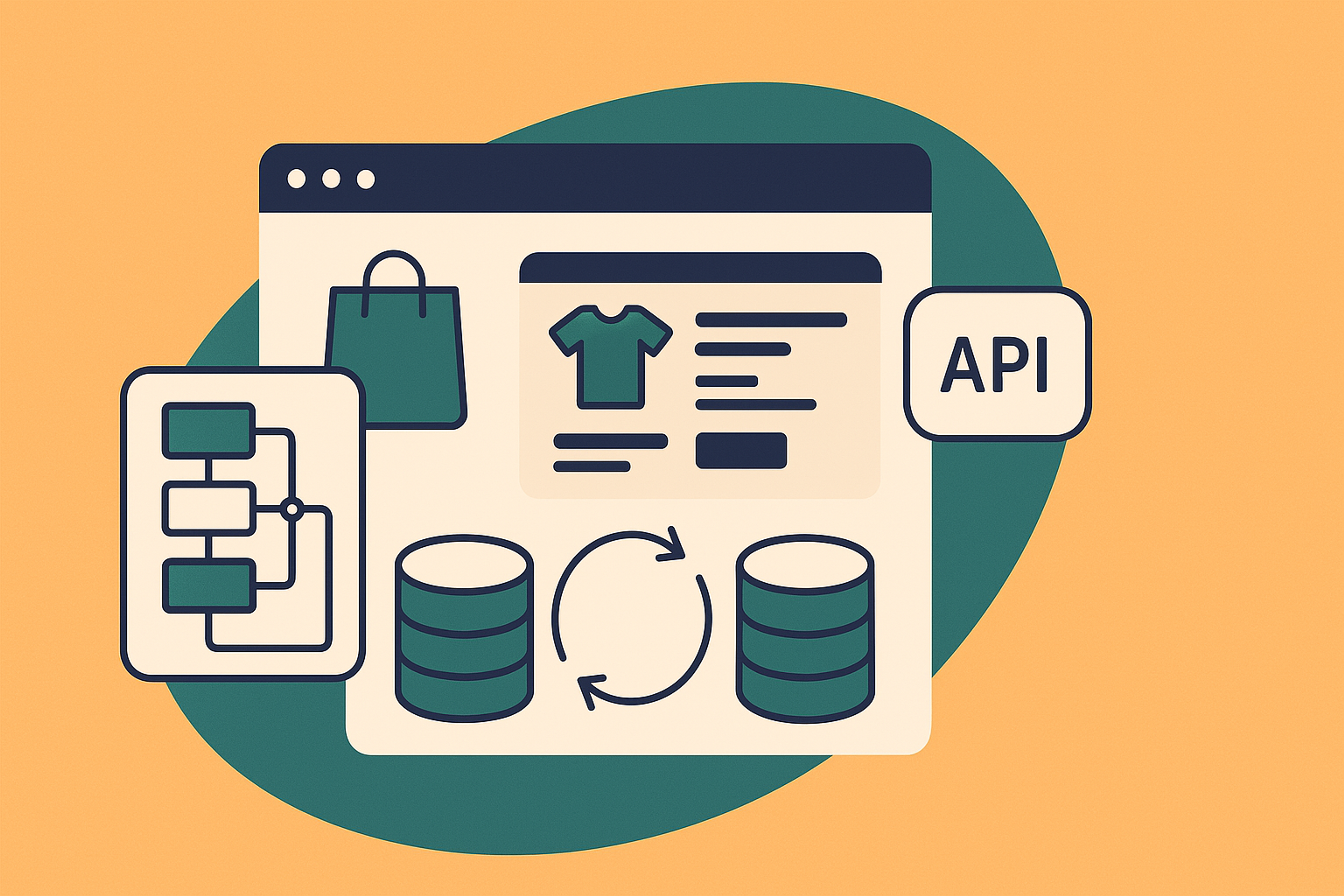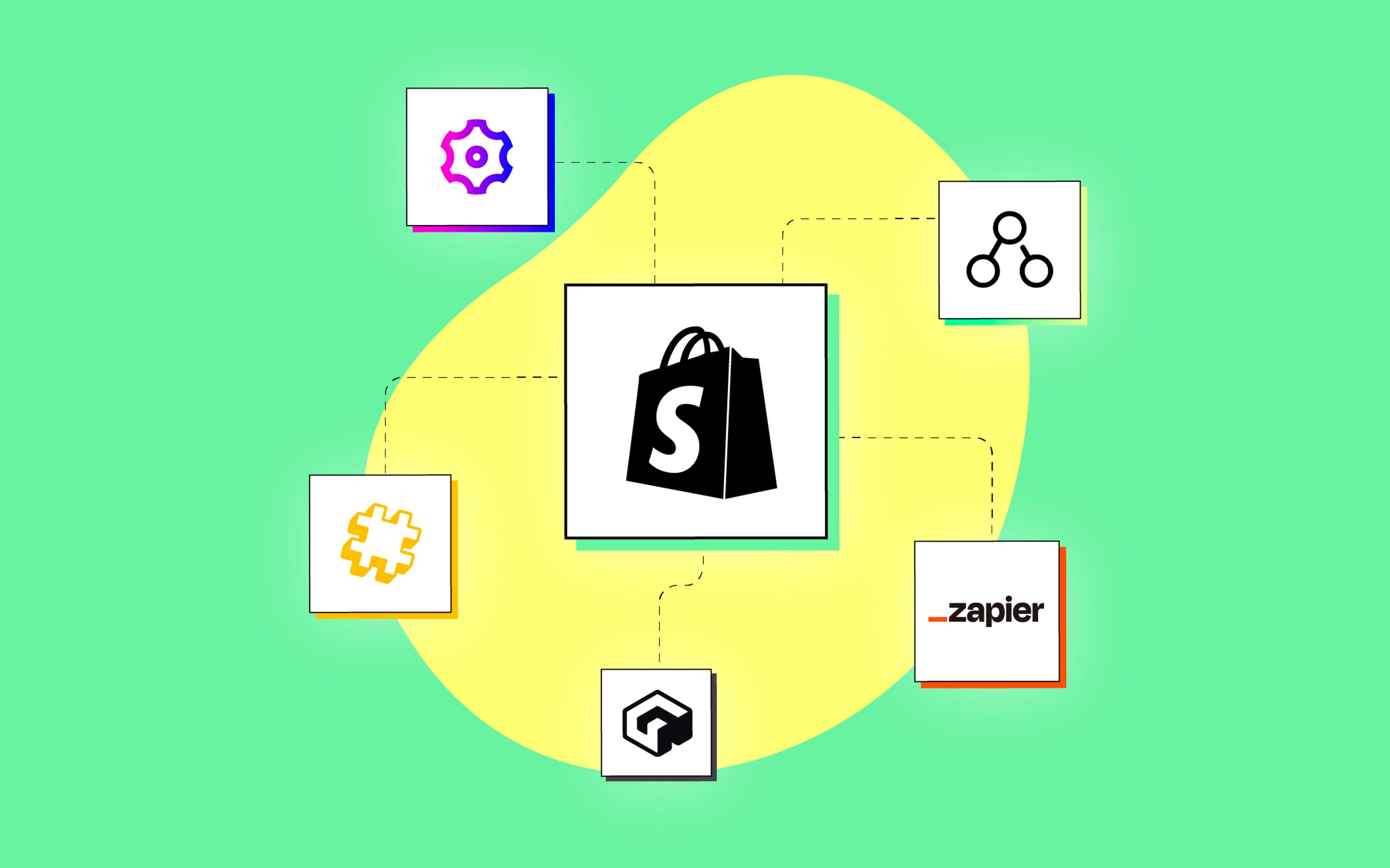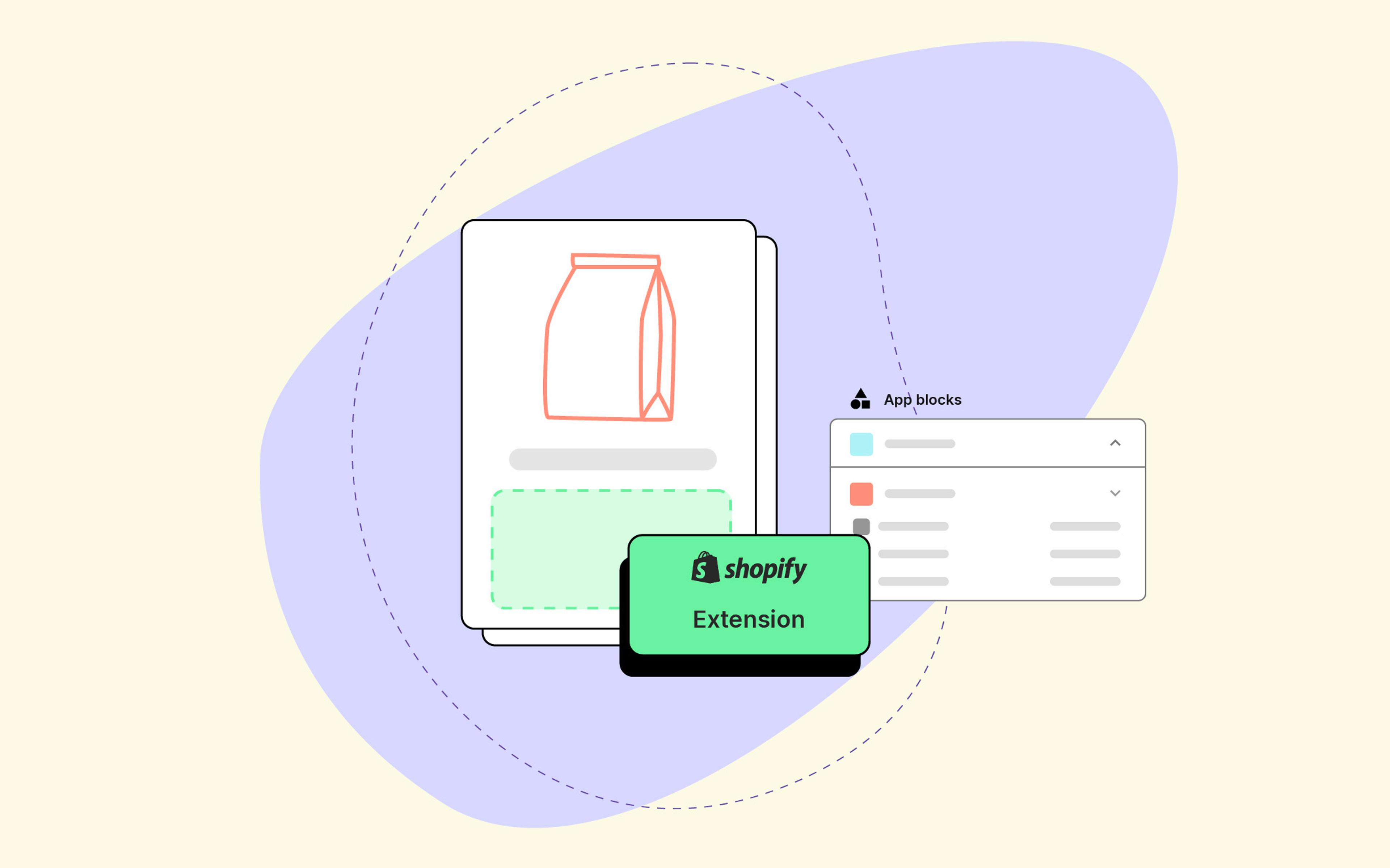When building custom applications for your Shopify store, one of the most consequential architectural decisions you'll make is how your app will interact with Shopify's data.
There are two primary approaches, each with distinct advantages and tradeoffs that can significantly impact your development process, maintenance overhead, and application performance:
- Database Sync Approach: Maintain a synchronized copy of Shopify entities in your application's database, creating a local representation that your code can work with.
- API-First Approach: Make direct API calls to Shopify whenever data is needed, avoiding local storage and working with the freshest possible data.
Having implemented both approaches across a number of enterprise Shopify integrations, I've seen firsthand how this seemingly technical decision can have far-reaching business implications.
Let's explore both models in depth!
The Database Sync Model: Your Own Data Kingdom
The database sync approach creates a mirror of relevant Shopify data within your application's database.
This typically involves initial data import during setup, webhook subscriptions to capture real-time updates, background jobs to periodically reconcile and verify data integrity, and ORM-style data access in your application code.
In essence, you're creating a localized representation of the Shopify world that your application can efficiently query and manipulate.
The Business Case for Database Sync
This approach shines in several key scenarios that leverage the power of local data access and relationship modeling:
- For data-intensive applications that need to perform complex operations across multiple Shopify entities, having local database access can dramatically improve response times.
- The ability to model relationships between Shopify entities in your own database allows for more sophisticated data handling. This becomes invaluable when your business logic depends on understanding connections that aren't directly exposed via Shopify's API.
- Shopify's API primarily focuses on current state, but many business decisions require historical context. By maintaining your own data store, you can preserve change history and implement point-in-time analysis.
In other words, whenever you need full ownership over your data, a database sync is the recommended approach.
The Challenges of Database Sync
Despite these advantages, this approach comes with significant considerations that must be managed throughout your application's lifecycle:
- Your synced data is only as current as your last update. While webhooks provide real-time notifications for many events, there are edge cases where changes might not be captured immediately. This can lead to situations where you need to refresh objects before using them, as they might have been updated in Shopify but not yet reflected in your local copy.
- Maintaining a reliable sync mechanism requires ongoing attention to webhook management and error handling, rate limits during bulk operations, recovery mechanisms for missed updates, and schema evolution as Shopify's API changes. A home goods retailer experienced this challenge when Shopify updated their metafield architecture, requiring significant rework of their sync implementation.
- Building a robust sync framework adds complexity to your initial development effort. This includes modeling Shopify entities in your database schema, implementing reconciliation logic, managing webhook subscriptions, and handling edge cases and conflict resolution.
To mitigate these challenges, it's imperative to:
- Implement comprehensive webhook coverage to capture all relevant data changes.
- Develop reconciliation processes to catch missed updates and ensure data integrity over time.
- Consider write-through caching for critical updates that need immediate reflection in both systems.
- Include data freshness metadata on synced entities to help identify stale data, and implement circuit breakers to fall back to API when sync issues occur.
The API-First Approach: Always Fresh, Always Direct
The API-first approach maintains minimal local state and relies on direct Shopify API calls whenever data is needed.
This approach features no comprehensive data mirroring, direct GraphQL or REST API calls for read operations, webhooks for triggering specific business logic, strategic caching for performance optimization, and more procedural code patterns for data access.
The Business Case for API-First
This lighter-weight approach offers compelling advantages in scenarios where simplicity and up-to-the-moment data accuracy are paramount:
- By removing the complexity of data synchronization, you can focus development efforts on core business logic. This often leads to faster time-to-market and reduced maintenance overhead.
- For applications where decisions must be made on the absolute latest data—such as inventory allocation or pricing—the API-first approach eliminates any risk of working with stale information.
If your application treats Shopify as the definitive source of truth and doesn't need to extend its data model significantly, the API-first approach aligns perfectly with this philosophy, keeping your architecture simpler and more focused.
The Challenges of API-First
The direct approach isn't without its own set of considerations that can impact application performance and development complexity:
- Shopify enforces rate limits on API requests, which can become restrictive for data-intensive operations. Without careful design, applications can hit these limits during peak usage.
- Working directly with Shopify's API means accepting its query patterns and limitations. Complex filtering, sorting, or relationship traversal that would be trivial in a local database might require multiple API calls or be impossible to perform efficiently.
- Without an ORM-style data layer, code often becomes more procedural and tightly coupled to Shopify's API structure. This can reduce code readability and make maintenance more challenging over time.
To mitigate these challenges, we strongly recommend that you:
- Design for efficient API usage patterns to minimize request volume and avoid rate limiting.
- Implement strategic caching for frequently-accessed data to improve performance without sacrificing freshness where it matters.
- Use GraphQL to minimize request volume by retrieving exactly the data you need.
- Build resilience for API unavailability through fallback mechanisms, and monitor rate limit consumption proactively to avoid disruptions.
The Hybrid Approach: Best of Both Worlds?
Increasingly, sophisticated Shopify applications are adopting hybrid architectures that combine elements of both approaches to maximize advantages while minimizing drawbacks.
This balanced strategy might include syncing frequently-accessed reference data with long refresh cycles, maintaining critical calculated values locally, directly querying time-sensitive operational data, and using event-driven architectures to update local state selectively.
It's a pattern we've been experiment with lately with good results—stay tuned for future updates!
Making the Strategic Choice: A Decision Framework
Rather than presenting this as a binary choice, consider these five key factors that should influence your architectural decision:
- Data Volume and Complexity: The more Shopify entities you need to work with simultaneously, and the more complex their relationships, the more compelling the database sync approach becomes. High-volume data processing with complex relationships typically favors the database sync model.
- Real-Time Requirements: If your application's core functionality depends on split-second current data (inventory, pricing for checkout), the API-first approach eliminates sync latency risks and ensures you're always working with the most current information.
- Development Resources: The API-first approach typically has a lower initial development hurdle, though it may become more complex over time as caching and optimization needs grow. Teams with limited resources might start with API-first and evolve as needed.
- Business Continuity: A local data store provides resilience against Shopify API outages or rate limiting, allowing core functionality to continue even during connectivity issues. Applications with high uptime requirements often benefit from the database sync approach.
- Analytics Requirements: Applications with significant reporting and analysis needs benefit tremendously from local database query capabilities, making the database sync model particularly valuable for business intelligence applications.
Align Your Technical Architecture with Your Business Strategy
The choice between database sync and API-first approaches isn't merely technical—it directly impacts your ability to deliver on core business requirements. By understanding the tradeoffs and aligning your architecture with your specific needs, you can build Shopify custom applications that provide lasting business value.
The most successful implementations I've seen share one common factor: they began with a clear understanding of the business requirements and let those drive the technical approach, not the other way around. Whether you're building your first Shopify custom app or evolving your existing architecture, taking the time to make this fundamental decision thoughtfully will pay dividends throughout your application's lifecycle.
Need expert guidance on your Shopify integration strategy? Reach out to schedule a consultation! Our team specializes in building high-performance custom apps and would love to help.



